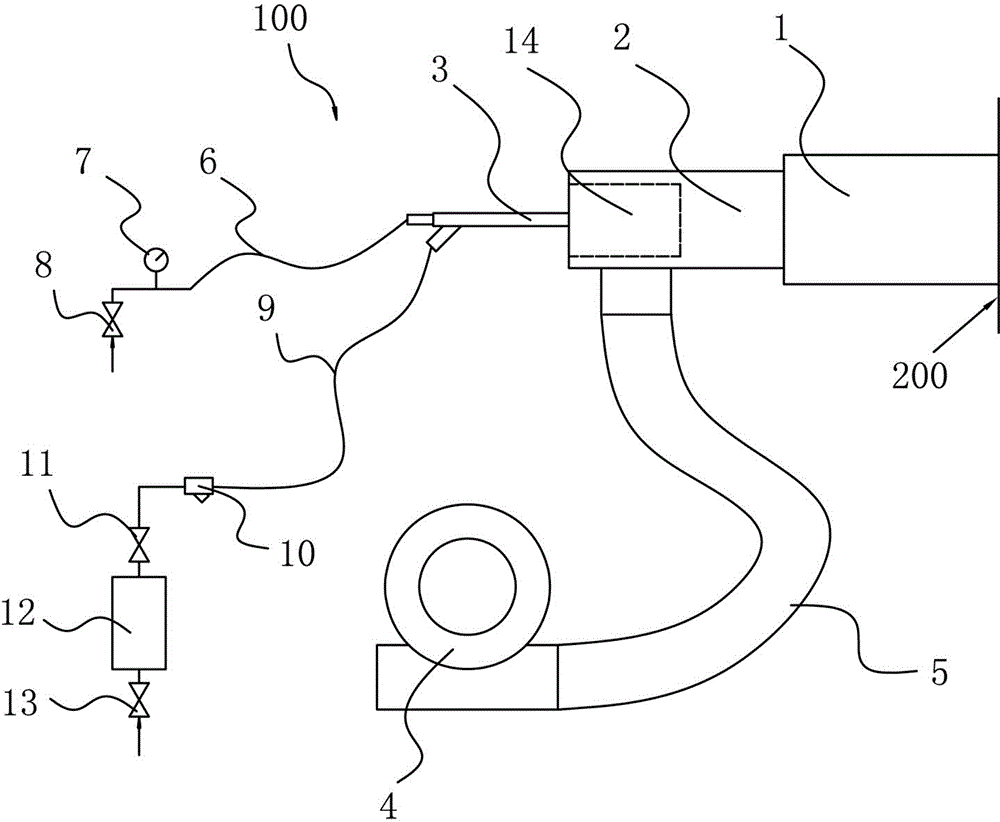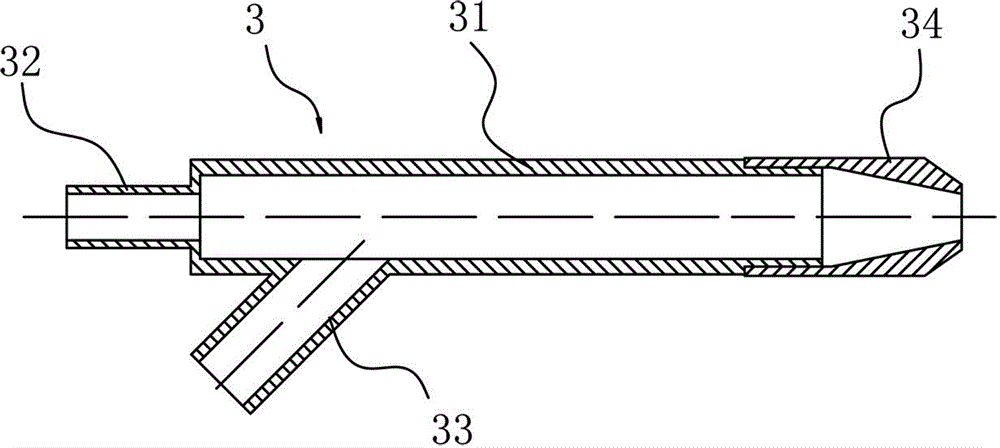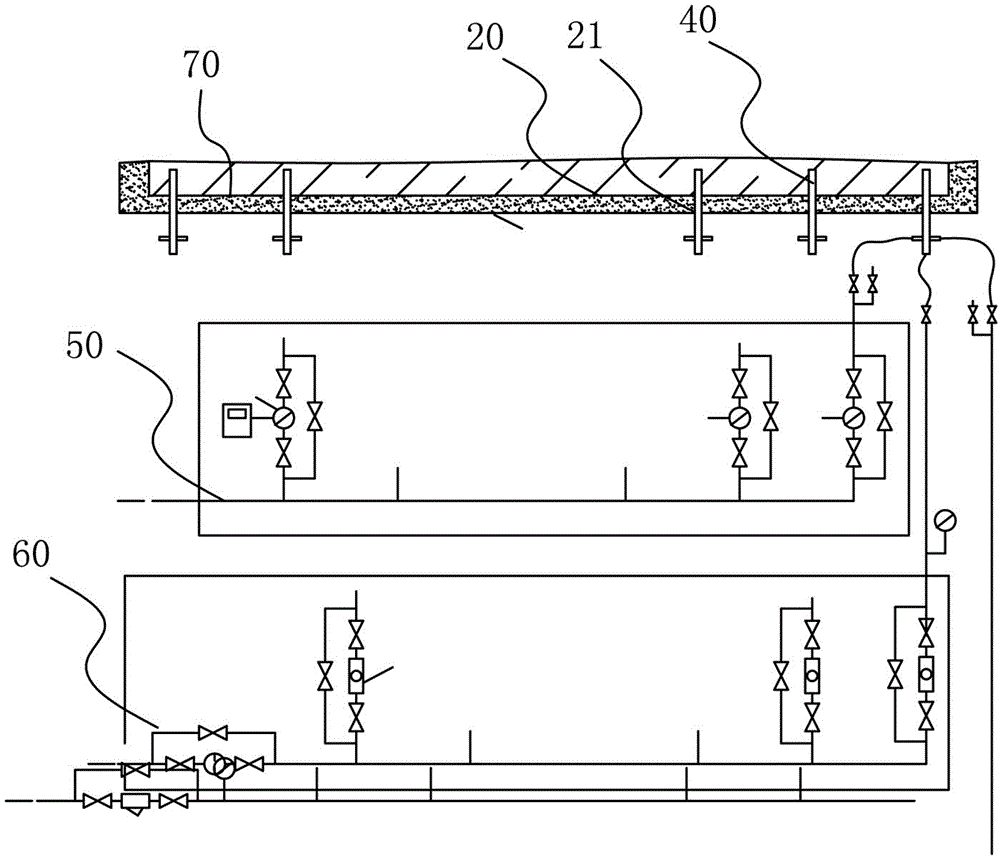Ocean blue colored glass online film coating method and online film coating equipment
A technology for tinted glass and coating equipment, applied in the field of float glass, can solve the problems of not meeting the aesthetic requirements of building decoration, large investment in secondary processing, not easy to temper and hot bending, etc., achieving high acid and alkali resistance, saving energy Resources, unique temperable effects
- Summary
- Abstract
- Description
- Claims
- Application Information
AI Technical Summary
Problems solved by technology
Method used
Image
Examples
Embodiment 1
[0055] (1) Weigh each component according to the following parts by weight:
[0056] SiO 2 72.5 parts by weight
[0057] al 2 o 3 0.6 parts by weight
[0058] Na 2 O 14 parts by weight
[0059] K 2 O 1.2 parts by weight
[0060] CaO 8.0 parts by weight
[0061] MgO 4.0 parts by weight
[0062] Fe 2 o 3 0.60 parts by weight
[0063] co 3 o 4 0.1 parts by weight
[0064] Se 0.1 parts by weight
[0065] (2) Send the above components into the float glass kiln to produce float glass ocean blue glass. The specific process parameters are as follows: melting temperature is 1400°C, clarification temperature is 1530°C, homogenization temperature is 1400°C, cooling The temperature is 1300°C, the molding temperature is 1000°C, the annealing temperature is 565°C, the height of the bubbling gun into the furnace is 800mm, and the bubbling flow rate is 1m 3 / h. The ocean blue glass A1 with a product thickness of 5mm was obtained.
Embodiment 2
[0067] (1) Weigh each component according to the following parts by weight:
[0068] SiO 2 72.4 parts by weight
[0069] al 2 o 3 0.7 parts by weight
[0070] Na 2 O 14 parts by weight
[0071] K 2 O 0.02 parts by weight
[0072] CaO 7.96 parts by weight
[0073] MgO 4.16 parts by weight
[0074] Fe 2 o 3 0.7 parts by weight
[0075] co 3 o 4 0.05 parts by weight
[0076] Se 0.01 parts by weight
[0077] (2) Send the above components into the float glass kiln to produce float glass ocean blue glass. The specific process parameters are as follows: melting temperature is 1350°C, clarification temperature is 1540°C, homogenization temperature is 1390°C, cooling The temperature is 1200°C, the molding temperature is 980°C, and the annealing temperature is 560°C. The ocean blue glass A2 whose product thickness is 6mm is obtained.
Embodiment 3
[0079] (1) Weigh each component according to the following parts by weight:
[0080] SiO 2 72.30 parts by weight
[0081] al 2 o 3 0.8 parts by weight
[0082] Na 2 O 13.70 parts by weight
[0083] K 2 O 0.05 parts by weight
[0084] CaO 8.29 parts by weight
[0085] MgO 4.5 parts by weight
[0086] Fe 2 o 3 0.11 parts by weight
[0087] co 3 o 4 0.2 parts by weight
[0088] Se 0.05 parts by weight
[0089] (2) Send the above components into the float glass kiln to produce float glass ocean blue glass. The specific process parameters are as follows: melting temperature is 1530°C, clarification temperature is 1550°C, homogenization temperature is 1430°C, cooling The temperature is 1430°C, the molding temperature is 970°C, and the annealing temperature is 570°C. The ocean blue glass A3 with a product thickness of 8mm was obtained.
PUM
| Property | Measurement | Unit |
|---|---|---|
| Thickness | aaaaa | aaaaa |
| Thickness | aaaaa | aaaaa |
| Thickness | aaaaa | aaaaa |
Abstract
Description
Claims
Application Information
 Login to View More
Login to View More - R&D
- Intellectual Property
- Life Sciences
- Materials
- Tech Scout
- Unparalleled Data Quality
- Higher Quality Content
- 60% Fewer Hallucinations
Browse by: Latest US Patents, China's latest patents, Technical Efficacy Thesaurus, Application Domain, Technology Topic, Popular Technical Reports.
© 2025 PatSnap. All rights reserved.Legal|Privacy policy|Modern Slavery Act Transparency Statement|Sitemap|About US| Contact US: help@patsnap.com



